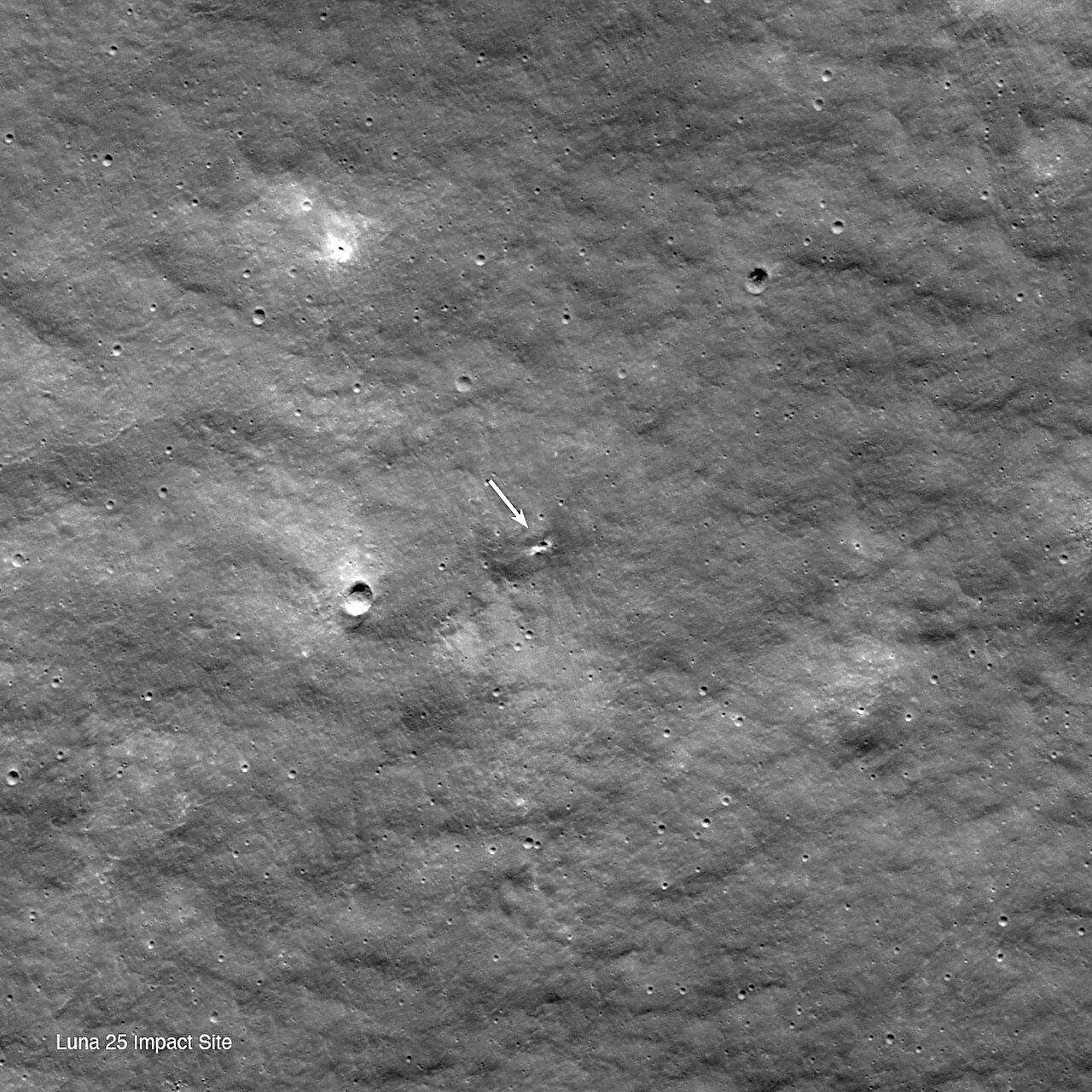NASA's Lunar Reconnaissance Orbiter (LRO) has imaged a new crater on the moon's surface that is likely the impact site of Russia's Luna 25 mission.
Luna 25 was launched on August 10, 2023, and was intended to land near the lunar south pole. However, the spacecraft experienced an anomaly during its descent and impacted the surface of the moon on August 19.
The LRO team was able to use the spacecraft's cameras to image the impact site on August 24. The images show a small crater about 10 meters in diameter located at 57.865 degrees south latitude and 61.360 degrees east longitude. The impact point is on the steep inner rim of Pontécoulant G crater, about 400 kilometers short of Luna 25's intended landing point.
The LRO team believes that the crater is likely caused by the impact of Luna 25. The crater is the right size and shape for a spacecraft impact, and it is located in the right area. Additionally, the LRO team has not seen any other natural impact craters in the area that could have caused the crater.
The impact of Luna 25 is a reminder of the risks involved in space exploration. However, it is also a testament to the success of the LRO mission. The LRO has been able to provide valuable data about the moon, including this new crater, which will help scientists to better understand the moon's history and evolution.
The Luna 25 mission was the first Russian lunar lander in 47 years. The spacecraft was carrying a number of scientific instruments, including a camera, a spectrometer, and a magnetometer. The data from these instruments would have been used to study the lunar surface and to search for water ice.
The loss of Luna 25 is a setback for the Russian space program. However, the LRO images provide some consolation by showing that the spacecraft did reach the moon's surface. The LRO team will continue to monitor the impact site to see if any new features emerge.





0 Comments